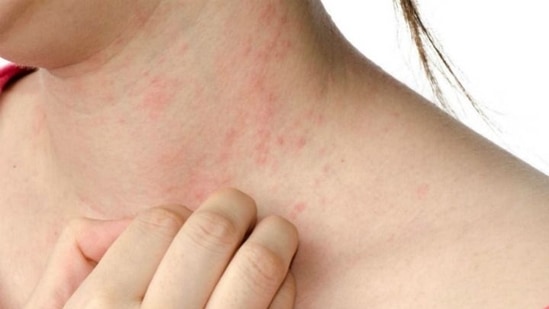
Heat rash and fungal infection in summer? Check out these tips for healthy skin in humid weather
9 months ago | 76 Views
Elevated ambient temperatures and humidity levels enhance sweat gland activity resulting in excessive sweating, which can clog pores to cause or exacerbate acne or pimple breakouts. Blockage of sweat ducts can lead to heat rash/miliaria.
In an interview with an Lifestyle Magazine, Dr Swayamsiddha Mishra, MD-DVL, Consultant Dermatologist and Cosmetologist at All About Skin Clinic in New Delhi, explained, “Warm and humid conditions can favour fungal growth particularly in skin folds and sweat prone areas. Jock itch or ringworm present as red itchy rashes in groin, inner thighs, buttocks. Athlete's foot manifests as itching, redness & a scaly foot rash. Intertrigo and pityriasis versicolor are the other fungal diseases commonly encountered in summers.”
She elaborated, “Furthermore, trans-epidermal water loss (TEWL) may increase, causing skin to dehydrate. Understanding these common summer skin issues and implementing preventive measures can help maintain healthy skin during the hotter months. Consulting a dermatologist can facilitate early diagnosis and faster management of the skin ailments.”
Highlighting that damp and moist skin is a perfect breeding ground for fungus, Dr Nidhi Jindal, Consultant Dermatology at New town AAI in Kolkata, recommended ways in which it can be prevented -
Dos:
- Keep skin dry always
- Cleanse all body folds with soap during bathing
- Dry all body folds including in between toes after bathing
- Wear loose cotton cloths
- Take shower after gym or workout session
- Keep the diaper area dry, frequent changing of diaper is advised
Don’ts:
- Scratch or rub
- Wear tight nylon or polyester clothes
- Neglect initial signs like red, scaly patches
Emphasising the need for specialised skincare solutions, particularly sunscreens, in addressing the challenges posed by summer conditions, Dr Rajesh Jaria, Consultant Internal Medicine at PD Hinduja Hospital and MCR at Khar, highlighted how effective dermatological care becomes crucial during this time. He shared, “Sun allergy, from direct exposure to sunlight causing hives, with UV light - A and B playing its role causing direct skin damage presents as a red, scaly, rash with itchy bumps. Sun sensitivity can become permanent hence, requires prolonged specialised care to reverse it. Heat (prickly) rash is from blocked sweat glands causing tiny bumps which eventually burst to release clogged sweat. The itch and discomfort can be intense.”
Anything you can do to stop sweating profusely will help reduce your risk. Dr Rajesh Jaria concluded with tips that dermatologists offer to their patients to help them sweat less and thereby lessen their risk of getting prickly heat include -
- Wear light-weight, loose-fitting clothes made of cotton.
- Exercise outdoors during the coolest parts of the day or move your workout indoors where you can be in air-conditioning.
- Try to keep your skin cool by using fans, cool showers and air-conditioning when possible.





















